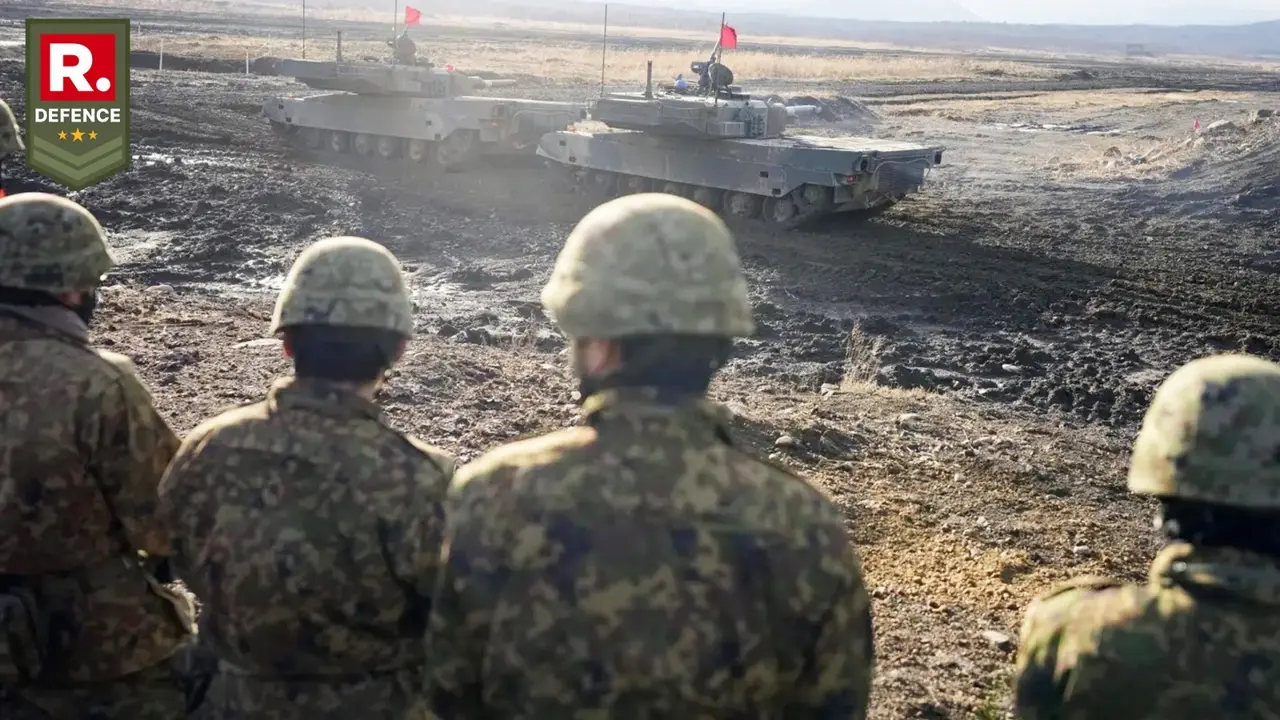Advertisement
Updated March 4th 2025, 11:48 IST
Paradise Turned Frontline: How Japan’s Yonaguni Island Became a Fortress Amid Chinese Threats
Once a tranquil island known for its wild horses and diving sites, Yonaguni has now become a military outpost at the forefront of rising Japan-China tensions.

Yonaguni, Japan – Nestled on Japan’s remote western frontier, Yonaguni Island has long been known for its untouched natural beauty, wild horses, and diving sites teeming with hammerhead sharks. Yet, today, the island is at the centre of an escalating geopolitical standoff, with Japan and the United States reinforcing their military presence against a rising Chinese threat.
The island, once a quiet retreat with no chain convenience stores and a population of fewer than 1,500 residents, now houses radar sites and a growing (JGSDF) base. Camp Yonaguni, built on what was once a cattle ranch, is poised to expand further with a missile unit, along with an enlarged port and airport. With Japan increasingly worried about China’s military activity around Taiwan—just 68 miles away—the island has become a frontline outpost in the brewing conflict.
Security or Over-Militarization?
The shifting landscape of Yonaguni has polarized its residents. Some see the influx of troops as a necessary step for defence and economic stability. Others, like Fumie Kano, an innkeeper and lifelong resident, worry about the island losing its identity and peace.

"As a child, I was so proud of this westernmost border island,” Kano reflects. “But recently, we are repeatedly told this place is dangerous, and I feel so sad.”
The local population has declined over the years, and while the arrival of military personnel has boosted businesses, it has also made the economy more dependent on the armed forces. Service members and their families now make up roughly one-fifth of the island’s total residents.
Potter Kyoko Yamaguchi voices concerns about the military expansion. “Everything is pushed through in the name of the Taiwan emergency, and many feel this is too much,” she says.
Japan’s Military Shift in the Face of China’s Growing Might
As China ramps up military operations near Taiwan and Japan’s southwestern islands, Tokyo has accelerated its defence strategy. The Japanese government has deployed PAC-3 interceptor missile units not only to Yonaguni but also to Ishigaki and Miyako islands. In 2015, a referendum supported bringing Japanese troops to Yonaguni, and a year later, a 160-member coast watch unit was established, complete with radar stations on Mount Inbi. Now, troop numbers have risen to about 210, including an electronic warfare unit.

Rear Admiral Takuhiro Hiragi, commander of Fleet Air Wing 5 of the Japan Maritime Self-Defense Force (JMSDF), emphasizes the importance of the region. “We have to be mobile, quick, and thorough to keep tabs on this region,” he says, noting that key sea lanes run through these waters—routes crucial to both Japan and China.
Tensions in the region have been rising. In August 2023, a Chinese Y-9 reconnaissance aircraft briefly violated Japanese airspace off Kyushu, forcing Japan’s military to scramble fighter jets in response. Around the same time, a Chinese survey ship was caught violating Japan’s territorial waters near a southern island. A month later, the Chinese aircraft carrier Liaoning, accompanied by two destroyers, sailed between Yonaguni and nearby Iriomote, passing just outside Japan’s territorial waters.
Local Fisherfolk on the Frontline of Conflict
Yonaguni’s fisherfolk have had a firsthand view of the growing military presence. In 2022, after then-U.S. House Speaker Nancy Pelosi’s controversial visit to Taiwan, China conducted military drills that saw ballistic missiles land off Japan’s southwestern waters. One of those missiles fell just 50 miles from Yonaguni, where more than 20 local fishing boats were operating.
"It was an extremely dangerous exercise that really made us feel China's potential threat right next to us," says Shigenori Takenishi, head of the Yonaguni Fisheries Association and a town assembly member. The missile drills kept fishermen from operating for a week, deepening concerns about their livelihoods and safety.
Memories of Okinawa’s Past and Fears for the Future
For many in Yonaguni, the increasing militarization brings back painful memories of the Battle of Okinawa during World War II, where about 200,000 people, nearly half of them civilians, perished. Okinawa’s main island still hosts over 50% of the 50,000 American troops stationed in Japan.

"Being at the centre of this issue is very stressful for residents," says shopkeeper Takako Ueno. "I don’t want people to imagine this beautiful island turning into a battlefield."
However, some argue that without a strong defence, Yonaguni could be an easy target in the event of conflict. Mayor Kenichi Itokazu has long advocated for more troops and security infrastructure. He also supports expanding the island’s port to allow for faster evacuations in case of emergency.
Evacuation Concerns: Can Yonaguni’s Residents Be Protected?
Despite Japan’s military buildup, concerns remain over whether the island’s population can be adequately evacuated if a conflict erupts. A government plan revealed that evacuating 120,000 people from five remote islands—including Yonaguni—to Japan’s main islands would take at least six days. Many residents doubt whether such an evacuation would even be possible in wartime conditions.
Kano remains sceptical. “It’s absurd,” she says of the evacuation plan. “If Okinawa is dragged into fighting, all of Japan would be in danger. I just hope the money will be spent on policies that will help the people in Yonaguni live peacefully.”
Yonaguni remains an island of contradictions—it's stunning landscapes and rich biodiversity stand in stark contrast to the radar sites and missile units now dotting its mountains.
Published March 4th 2025, 11:48 IST
